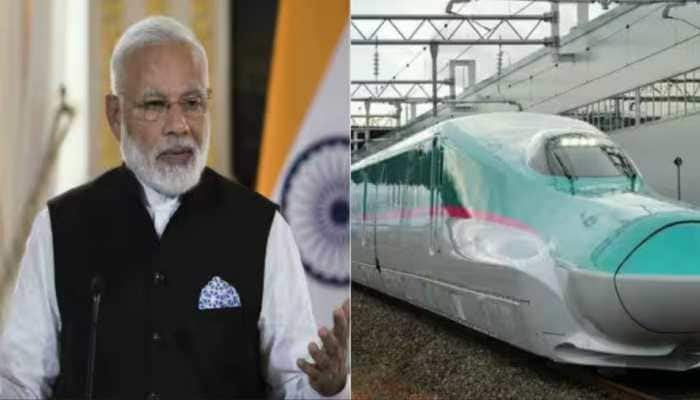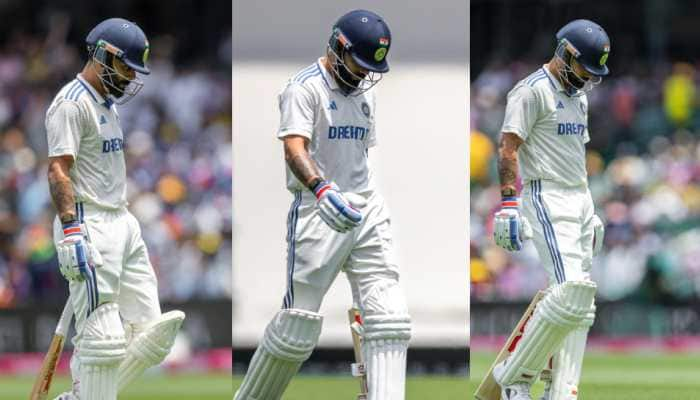Life expectancy up, but public spending on health well below global average: Economic Survey
Given the pressing need to redistribute, India did not invest sufficiently in human capital for instance, public spending on health was an unusually low 0.22 per cent of the GDP in 1950-51.
Trending Photos
)
New Delhi: The country's public spending on health is "little over" 1 per cent of GDP, the Economic Survey said on Tuesday, adding that there are "insufficient" instances of good models in the health sector.
"Given the pressing need to redistribute, India did not invest sufficiently in human capital for instance, public spending on health was an unusually low 0.22 per cent of the GDP in 1950-51.
"This has risen to a little over 1 per cent today, but well below the world average of 5.99 per cent," the survey tabled in Parliament said.
It said that as per Reserve Bank of India data, expenditure on social services by Centre and states, as a proportion of GDP was 7.0 per cent during 2016-17 (Budget Estimate), with education and health sectors accounting for 2.9 per cent and 1.4 per cent respectively.
"The year 2014-15 in respect of which latest actual figures are available showed a significant decline from the RE level following a large decrease in actual social sector expenditure of the states from the revised estimates," it said.
It said that on state capacity, delivery of essential services such as health and education, which are predominantly the preserve of state governments, remains "impaired".
"But on health and education there are insufficient instances of good models that can travel widely within India and that are seen as attractive political opportunities. Competitive populism needs a counterpart in competitive service delivery," it said.
The Economic Survey said that a second distinctive feature of the Indian economic model is the "weakness" of state capacity, especially in delivering essential services such as health and education.
It said that India's health policy aims at an integrated approach which will provide accessible, affordable and equitable quality health care to the marginalised and vulnerable sections.
"Despite the challenges faced by the government in providing affordable health services to the population, there have been some notable achievements in the health sector. Life expectancy has doubled and infant mortality and crude death rates have reduced sharply.
"India's total fertility rate (TFR) has been steadily declining and was 2.3 (rural 2.5 and urban 1.8) during 2014. Infant Mortality Rate (IMR) has declined to 37 per 1000 live births in 2015 from 44 in 2011.
"The challenge lies in addressing the huge gap between IMR in rural (41 per 1000 live births) and urban (25 per 1000 live births) areas," the survey said.
It said that Maternal Mortality Ratio (MMR) declined from 301 maternal deaths per 100,000 live births during 2001-03 to 167 during 2011-13.
"There are wide regional disparities in MMR, with states like Assam, Uttar Pradesh, Rajasthan, Odisha, Madhya Pradesh and Bihar recording MMR well above the all India MMR of 167.
"Therefore, in addition to reducing the all India MMR in line with SDG 3 targets, by improving health and nutritional status of women, there is need to focus on states with MMR higher than the national average," it said.
The high levels of anaemia prevalent among women in the age group 15-49 have a direct correlation with high levels of MMR and in Haryana and West Bengal more than 60 per cent of women suffer from anaemia.
"India's low level of expenditures on health (and education) have been the subject of criticism. It is worth understanding states' health and demographic outcomes since the 1980s. Two such key indicators are life expectancy at birth and infant mortality rate.
"There are two primary reasons to expect convergence in these key health indicators. Intuitively, the worse the initial situation, the faster progress will occur not least because many medical 'technologies' such as antibiotics and other medical practices are commonly available across the world and India," it pointed out.
The survey said that the second is a measurement issue, there are much clearer bounds on health indicators that would naturally lead to convergence.
Pointing out to another area, it said that Kerala, which started off with a life expectancy of 73.5 years in 2002, posted an increase of about 1.27 years over 11 years while UP, which started off with an LE of 60.8 years in 2002, saw a gain that was twice as large of about 3 years.
Similarly, even more than a decade later, Kerala experienced little change in its IMR of 11 while Odisha registered a 49 point decrease, moving from an IMR of 87 to 38 points.
"The fact that convergence is occurring in key health indicators within India suggests that there are no traps of the sort described earlier that prevent technologies from flowing freely within the country. How does this progress compare on a global scale?
"There is an interesting contrast here. In LE, there is strong evidence of international convergence. However, the Indian states all lie below the line of best fit, indicating that the Indian states are making slower progress than the average country," it said.
It said that analysis shows that the under-performance of the Indian states was not true of the 1990s, but that owed in part to the AIDS epidemic that drastically reduced LE in large parts of sub Saharan Africa. The world recovered from that in the 2000s and seems to have posted stronger gains than the Indian states.
"In sum, India is doing reasonably well on life expectancy on an international scale, but on IMR has scope for improvement," it said.
Stay informed on all the latest news, real-time breaking news updates, and follow all the important headlines in india news and world News on Zee News.
Live Tv







)
)
)
)
)
)
)
)
)
)
